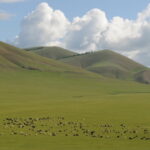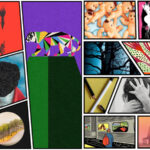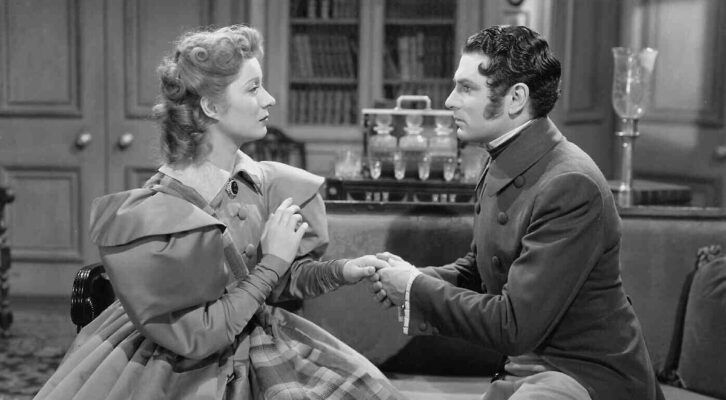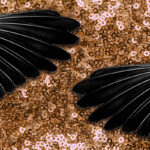The Joy of Running
On the Fundamental Human Rhythm of One Foot After the Other
Running as clarity. The creation of. The absolution in. Threnody. Ode. Palinode. Genethliacon. Elegy. Born and born again. To celebrate: much-frequented, kept solemn. Like prayer and thanksgiving. Like the body overcoming. Of birth and death. Movement and lowering into the soil, beyond and then the incorporeal, wraith, the shade of ever. Running as obsession.
At first I couldn’t run at all. Two hundred eighty pounds. Years—fifteen years—of bodily abuse hung on a once-in-shape frame. My shins throbbed, muscles tensed, and bones stressed after only a quarter mile. The bottoms of my feet cramped and my lungs felt overinflated, heavy with internal sweat or pins-and-needles or some other river of pain, the threshold far past. The pounding, the force, nearly a thousand pounds of pressure per step—or something equally difficult to conceive of. Tendons, ligaments. My muscles would adapt, slowly. But those other fibers, the less malleable ones, would be forced to burden the load until then. My body couldn’t perform the demands I placed on it, couldn’t bear my weight or my effort.
How and why we move. Migration and purposeful movement versus potential movement and static contractions.
Migration: The white-rumped sandpiper, a shorebird, not much bigger than a sparrow, breeds in habitats above the Arctic Circle. Every fall it migrates to South America to overwinter. Before it embarks on the opening 2,500-mile leg—more than two days and nights, nonstop—the sandpipers fatten up. Their bellies full, they fly all the way to Suriname, on South America’s north coast. They fatten up again, and then it’s 2,200 miles overland across the continent, through the Amazon, and finally to Argentina to complete the 9,000-mile one-way trip from, nearly, pole to pole. At the end of each of their migrations, in the fall and spring, the birds again reach continuous daylight, after having come from the midnight sun. In short, except for when in transit, the world the white-rumped sandpiper experiences is without night.
My journey, my migration, started, like so many of my previous adventures, with reading. I turned to Bernd Heinrich’s Why We Run: A Natural History. Little did I know the lessons it contained, the wisdom one could garner simply by understanding human locomotion.
Heinrich explains potential movement thusly, “Play serves a vital function in many animals. It serves the ultimate function of practice, and it is motivated by pleasure. Pleasure is a proximate mechanism for achieving many ultimate benefits.” And since the mind serves as the mediator between sensory input and physiological output, we know that playing, frolicking, call it what you will, means health, means life, means muscles contract and hearts beat and lungs expand.
You fall you fall you fall. It’s magic. It’s not hard to run. It’s actually, given gravity’s persistence, impossible not to. Stand in the middle of a room, at the threshold of a driveway or a sidewalk, anywhere. Feet shoulder-width apart. Knees gently flexed. Relax. Now bend. But not at your hips or at your knees or at your waist. Instead, lean forward at the ankles. Lean far enough and let gravity do its job: you fall. Now put a foot down to turn your fall into a step, keep your lean, and stride with the other foot. You’re running. You’ve fallen and you’ll keep falling so long as you keep your core tight, your hips relaxed and legs pistoning, your chest forward, head level.
Last year, a friend, who just weeks before had nearly died of alcohol poisoning (he had woken up in an ICU, and learned his BAC had been 0.42 when friends brought him to the hospital), texted me to say, “I just ran eight miles in 45 minutes.” Jesus. That’s a sub-6:00 pace. “Just thought it might feel good to stretch my legs a bit.” Granted, he used to be an athlete, had a D-1 basketball scholarship in his pocket until an illness derailed him. Jealousy: it’s not only for artists, ex-lovers, and politicians. I wanted, now at 260 pounds, to run like that, to just forget about midfoot strike . . . core tight . . . relax at the shoulders . . . swing arms perpendicular and not in front of–
Greece. Pheidippides. Not 26.2 miles but over 140. He ran all day, through the night, into the morning, again through the day, at least. Running nears a preposition. Around, through, into. An Athenian herald, an hemerodromos, “day-runner.” A professional runner. The Persian forces outside Athens, ready to squash, plunder, pilfer: the hardness of consonants—maybe wars start here. The plains of Marathon, the severely outnumbered Athenian army. Send someone, the Athenian generals commanded, to Sparta. So he ran. The Spartans could not fight until the moon was full, so Pheidippides brought that message back to the Athenians—140 miles, all day and through the night and into the day and night again. He missed a surprise attack: 6,400 Persian bodies lay dead; 192 Athenians. The Persians fled to their ships, hoped to beat the Greeks to Athens, to take their city if they couldn’t take their army. Pheidippides. Carry the news, the generals commanded, of our victory and the approaching Persian ships. Two hundred eighty miles, and now a final dash—twenty-six miles—from the plains to the city. The hemerodromos warned Athens and collapsed, died shortly thereafter from exhaustion, just as the Athenians arrived in town to thwart the Persian’s attempt on the city.
The first recorded account of the word joy: a word of greeting uttered when Pheidippides announced Athenian victory. Lucian tells us this in Pro lapsu inter salutandum. “Joy to you, we’ve won! Joy to you.” And then, death from exhaustion.
From the Greek: Chairete: “Hail!” Nikomen: “We have won.”
From Robert Browning’s “Pheidippides”:
So, when Persia was dust, all cried “To Akropolis!
Run, Pheidippides, one race more! the meed is thy due!
‘Athens is saved, thank Pan,’ go shout!” He flung down his shield, Ran like fire once more: and space ’twixt the Fennel-field
And Athens was stubble again, a field which a fire runs through, Till in he broke: “Rejoice, we conquer!” Like wine through clay, Joy in his blood bursting his heart, he died—the bliss!
Pheidippides met the god Pan, halfway to Sparta, above Tegea on Mount Parthenion. Pan promised him protection, glory, faith, as long as his message was successful, and he agreed to fight against the Persians, for in addition to his other powers, Pan was known for his capacity to instill an extreme sort of fear, an irrational, blind fear, one that could freeze the mind and destroy any sense of judgment—panic. Panic: a fear which dominates and prevents reason. Did Pheidippides really meet Pan? Was it a delusion brought on by exhaustion? Surely he believed in the gods, felt their presence often. I once read William Ralph Inge: “To become a popular religion, it is only necessary for a superstition to enslave a philosophy.” Was Pheidippides delusional? In order for a vision to be called a delusion, it must meet three criteria: 1.) certainty, 2.) incorrigibility, and 3.) impossibility. But if the vision involves a value judgment (i.e., the belief that gods are, or are not, real and visible), then it’s not a delusion because it can never be proven untrue.
Pheidippides ran 26 miles on that last jaunt from the plains to the city, but the modern marathon is 26.2 miles because the Queen of England wanted the runners to finish in front of her seats at the Olympic Stadium, which was 385 yards from the original 26-mile finish line.
Muscles are one of those things most of us take for granted. They are the engines of our bodies—they turn energy into motion. It is impossible to do anything without muscles: express an idea, run, build. Eat. Fuck. Skeletal muscles we can see; smooth muscles push blood, food, sperm, and egg; cardiac muscles stretch barely but contract forcefully, involuntarily. Twitch, twitch. Skeletal muscles always come in pairs: the pectorals pull your arms to your front side; lats pull your arms to your back. For every action, there is an equal and opposite reaction. A sustained contraction: power: tetanus. You think it and they move: voluntary. We’re used to the libidinal force of blood, the swooning, the pumping, the sweating, and sometimes it’s used to us, too. The differences between faith of feeling and faith of event: one is voluntary, one is involuntary. Or vice versa.
At 250 pounds, ligaments have stretched a bit. Soreness occurs, but, as my training journal attests, “The pain, the searing-awful-can’t-walk pain, is lessening and I can breathe and enjoy this, finally.” I’m still only running two miles at a time, often taking well over twenty-five minutes to do it, but my legs feel full, strong, less like rubber bands and more like cables.
I didn’t yet have it in my head—I wasn’t a runner—but I had it in my legs.
The communal chase is part of our biological makeup. We’re hungry? We hunt. To hunt? We run, we chase. We want to mate? We display physical prowess. To do so, we jump or lift or hunt, and to hunt, we run.
To run we churn. Together and alone, in loud packs and in solitary quiet. We know, evolutionarily, that over great distances, no animal can outrun us. Think of a car, its gas tank full. Without our intervention, it can only go, perhaps, several hundred miles. Though over a short distance, say a quarter mile, that same car could reach speeds of 125 miles per hour and complete its journey in twelve seconds. We do not move quickly as well as a car, but with minimal nutrition—think plants and fruit found along our journey, on the side of trails, in deserts, in forests, on the shores of rivers, lakes, streams—we can run for thousands of miles, day after day after day until we find what it is for which we yearn.
What we have that other animals, that machinery, do not is an enduring desire to be nowhere and everywhere at once.
Heinrich writes, “Movement is almost synonymous with life. With elongating stems and twirling tendrils, plants race one another toward light.” Likewise, seeds compete to be first—in the wind, in a migrating bird’s stomach (to be dropped later, of course), in the river, and, finally, in the ground. But plants and seeds aren’t conscious, don’t move voluntarily.
Humans harness chemistry and propel, through the power of our mind/muscle connection (an instantaneous synaptic mechanism), ourselves forward, backward, in any plane of motion—even upward and over vast distances, as we have not only harnessed our bipedal muscles but also our brains: we control, now, motion through the air, through water, over land, at speed. We have built machinery to do our locomotion for us.
But how far, and how hard, can we push ourselves? There’s research about cortisol production when the body becomes overexerted due to exercise; the muscles break down too far, lose too much oxygen and blood to be rebuilt, and at that point, exercise is counterproductive. This is why we train, why we increase the distances we can run, slowly and over time. We teach our bodies to deal with stress, physiological, psychological, hormonal. We have to condition ourselves. We could give up, we probably should stop before exertion. By definition, as Heinrich points out, “Stress is the expenditure of energy. [We] can’t live without it.”
At 220 pounds, I could finally match the effort with the results. Heinrich, my touchstone, my witness, writes about how in bipedal animals there happens a decoupling between breathing and the runner’s gait. Essentially, he says that the energy we use to run cannot also simultaneously be used to ventilate the lungs. It’s a conundrum our biology can’t overcome. Ideally, though, the runner should couple her arm swings with her stride and her stride with her breathing. Left arm, right leg, inhale; right arm, left leg, exhale. Repeat. Contrary to the decoupling, we can maintain an equilibrium between effort and pace, pace and our desire to get stronger. I sweat just as hard, but I started to enjoy it, the effort, the process, the exertion. I looked forward to each outing, and missed it when parenthood and work wouldn’t allow me the time to run. My body started to change. Muscles lengthened and strengthened, fat melted, and my heart knew now to expect the extra work. Became accustomed.
It’s not exactly the theory of progressive load increments, but it’s like that. The theory has been known and employed since ancient times. According to Greek mythology, Milo of Croton, wanted, in his early teen years, to be the strongest man the world had ever seen and embarked upon this mission by lifting and carrying a calf every day. As the calf grew and became heavier, Milo became stronger. Finally, when the calf had developed into a full-grown ox, Milo, thanks to the long-term progression, was able to lift the ox. He was the strongest man in the world.
I wanted to be the fastest runner I could be and so I ran farther and harder, making time when I had no time, and with the constant thought, as Heinrich writes, “In evolution, almost every solution is the result of compromises.”
Science tells us that the basic molecular processes are the same in all three types of muscle fibers. Striate appears as alternating stripes of light and dark when viewed under polarized light. You think about moving your arm and your nervous system fires: contract! It reminds me of Edmund Burke’s writing on the sublime: “It is our ignorance of things that causes all our admiration, and chiefly excites our passions.” During contraction, thin fiber slides against thick fiber and each shortens, creating bridges, proteinic filaments stronger in numbers than when alone. The muscle shortens and produces force: energy into motion into strength into capacity.
An essay in which everything is a metaphor for everything else, except everything is the way the body works and everything else is also the way the body works.
The debate between heel strikers and midfoot strikers continues in the running world. Who is less likely to get injured? Which is better for the body? Which is the more normal, ancestral approach to running? But at two hundred pounds, I started to gain confidence in the midfoot strike, in the less percussive pounding, in the natural forward lean necessary to achieve such a movement. My calves ached less, my core became stronger, and I could run, more or less, as far as the calorie surplus I’d created would last.
There’s always, though, a give and take. Yes, I could run for as long as my body metabolized and fueled itself, but that system is, like the body as a whole, flawed. Energy, like time, is inherently slippery. Heinrich—O Captain! my Captain!:
All of the bipedal animals that run fast do so by a rapid succession of long leaps, either alternating between legs or kicking off with both legs at the same time. There is considerable heavy impact of the feet striking the ground, and with that impact comes a potential loss of energy. However, mechanisms have evolved to harness some of this otherwise wasted energy. It’s in the anatomy. As the foot is depressed on landing, the heel (Achilles’) tendon is stretched, and when the foot rebounds with liftoff on the toes, the just-stretched tendon, or springing ligament, contracts and releases stored energy.
So it makes sense to initiate that coiling as effectively and safely as possible. Hence the midfoot strike.
The sublimity of force, of gait, of contract and stretch and stretch and contract, and how often animals’ gaits have rhythm. Heard together, rich and hoofed, they become a herd of drummers.
The sublime as a pleasing fear. If I just keep running. If I run that far from home, will I be able to run all the way back? As Burke writes about in A Philosophical Enquiry into the Origin of Our Ideas of the Sublime and Beautiful, the sublime can be seen as the fantastic realization of terror transformed into pleasurable horror, elegant awfulness. Ecstasy isn’t the right word, and neither is freeing. The clichéd nature of running away from your problems, or hitting the road to stop the mind from its turning exist because, like most clichés, they’re true. But what I felt as I learned to run from within and from without . . . It’s strange, the impulse to run when you’re not chasing something.
People ask me all the time: Why do you run? Why not just eat less and do more moderate exercise, like a stationary bike or something, instead of stressing your body so much? “Stress is the expenditure of energy. [W]e can’t live without it.” We already know this. And besides, people do some rather bizarre things to 1.) satisfy their curiosity, 2.) pique their interest in things different from themselves, and/or 3.) to test themselves against either odds or others. Heinrich tells this story of a friend who did all three of those simultaneously. He writes of a colleague at the University of California who “chase[d] lizards on a miniature racetrack until they could go no farther. Then he grabbed them and ground them up in a blender.” In doing so, he could measure their lactic acid generation. “By assaying lizards after varying sprint durations, and at varying postsprint intervals, he was able to determine that it takes some lizards an hour or more to get rid of their lactic acid load.”
This urge to run, or grind up lizards to study exercise physiology, comes down to, perhaps, one trait all humans share: what you have is less important than what you do with it. This simple fact allows us to keep reaching, which then allows us achievement, and achievement is what sometimes defines us.
Evolution isn’t fair. Neither is the process it takes to change oneself. Heinrich tells us an incredible story that takes place in the relatively harsh winter of 1985-86: three-quarters of South Dakota’s fifty thousand pronghorn antelope died “from cold, heavy snow, and wind. And fences.” Not able to escape the brutal weather, the ruminants piled up behind fences and died. Pronghorn antelope are one of nature’s freaks: they can jump astonishingly far, but they have not evolved the ability, like their forest-dwelling cousins, the white-tailed deer, to make vertical leaps. For the muscles packed in their legs, the task should be trivial, but its mind doesn’t make the connection. Again, “The mind leads, the body follows.” The pronghorn antelope can’t imagine leaping over a fence.
April 14, 2013: The doctor calls to tell me that my HbA1c is 12.8%. In other words, I am a thirty-three-year-old type 2 diabetic. Fuck that. On April 15, I ran.
Scientists used to think that our ability to run was simply a by-product of our bipedalism, of our ability to walk, that because we could walk we naturally, evolutionarily, just one day decided to pick up the pace and run. In a 2004 study published in Nature, University of Utah biologist Dennis Bramble and Harvard University anthropologist Daniel Lieberman dispute that argument and posit that modern humans evolved from apelike ancestors because they needed to run long distances, perhaps to hunt or scavenge on the vast African savannas. It wasn’t because we could but because we had to. Those vultures on the horizon, certainly circling over a recently dead animal—our dinner!—are an hour’s walk away, but if I run I could be there in twenty minutes and eat and feed my family. This ability, they conclude, could have shaped our anatomy, and not the other way around. Our tendons became springlike; our ligaments, too. Our toes shortened to help us create downward force to push forward, and our shoulders evolved to rotate independently of our heads and necks to allow us better balance. Running made us human—at least in an anatomical sense. The emergence of Homo sapiens is tied directly to the evolution of running.
Humans, compared to other running animals, are poor sprinters, but we are, again comparatively, adept at running long distances. We evolved endurance, not speed; hunters and gatherers needed to balance caloric expenditure with potential caloric intake, and we all know that slow and steady . . . Heinrich tells us, “Speed is meaningless unless the distance is specified.” I’ve always thought that even the basest of animals knows that scavenging is a more reliable source of food than hunting, but to scavenge well, one has to either be at the right spot at the right time or get to the right spot quickly.
September 15, 2013: The doctor calls to tell me that my HbA1c is 4.6% (between 4.5 and 6.0 is normal). In other words, I am a healthy thirty-three-year-old. Because I ran. But I wouldn’t stop running. It wasn’t a sprint; I wouldn’t outrun what was inevitable, what was chasing me—death chases all of us, and none of us can outrun it—but I could endure the process, and enjoy it.
Running, though, is hard work. Just because we’ve evolved to do it, doesn’t mean it’s easy. We have to train, our bodies and minds. Training involves not only the physiological adaptation of the muscle fibers, but also the neurological coordination in recruiting them to do their work. But when the brain and legs work together, the hard work becomes, at least, less noticeable.
Heinrich again, helps me understand, when he writes, “At the most efficient running stride, arms, breaths, and heartbeats are multiples of one another. Those multiples change with pace and effort, but the synchronicity does not. It is as though his legs beat the tune to create the body’s rhythm.” But our pace and stride and breath change depending on strategy, on tactics, on our competitors. They are impacted by our meals, our goals. And our progress.
I can’t say it better than Heinrich: “The distance runner must fairly float along the ground.”
I haven’t evolved. Except that I have. Running, unlike lifting weights, requires relatively little restructuring of the body. Given proper nutrition and gravity, our bodies know how to fall one foot at a time. The only question then is, What’s your motivation? D.H. Lawrence wrote, in The White Peacock, “Be a good animal, true to your animal instincts.” My instinct? To not be ill, to live a healthy, long life. My friend’s instinct after nearly dying of alcohol poisoning? To prove his body still worked, hard, and at his command.
It’s not just an escape or a way to trim the waistline—though both of those are damned good reasons to run. For centuries runners have been prized members of their societies. Heinrich tells of the Penobscot tribe in Maine. Each family group had designated runners who would chase down moose and deer—this was considered an honorable position in their culture. The provider. The caretaker. The hunter.
The runners, though, were guarded by old men, as Heinrich writes, “to make sure they did not have sex, that they slept with their legs drawn up, and that they didn’t chew spruce gum, as those transgressions were thought to impair their breathing as well as make their testicles clack when they ran, warning the deer.”
Humans no longer need to run—to eat, to survive, to escape, to scavenge—but our bodies still crave it, the forward falling, the momentum, the exertion, the lung-heart, the bellows-pump. Our blood is designed to help us exert; our mitochondrial power (the batteries of our cells that create the energy, used to contract our muscles) has evolved to feed us as we run. We take breaths, complicated structures of silent syntax, like an em dash. Heinrich writes, “We produce blood to the extent that the body demands.” We can run, theoretically, forever.
Finally, 180 pounds. My goal. What I’ve been running toward, why I’ve been running toward. And away. From. To. I didn’t get there via magic but through hard work, through training. Heinrich, all along and even now, understands this magic: “There is a truth, a beauty, and a symmetry in this that is inviolate. Every step counts. Each is an act of beauty. Together they create stride, and in terms of the whole, pace.” I’ve learned to pace myself, to make of determination long-term results.
I’ve been having this recurring dream. My son and daughter, just five and three, are in a rowboat. There’s an oar in the water and one in the hull; the water’s dark—midnight green, or rifle almost—and I see them trying to push the one oar, straining their hips, balls of their feet, shoulders and lats, their hands. But they can’t move the rowboat—they’re stuck in the middle of the pond. Their repeated efforts remind me, inside the dream, of a pendulum swinging perpetually: the speed, the consis- tency of arc—and the reflections on the surface of the water lift over their heads, this pendulum, one edge of light bumping up against another and starting a different shape—the abstraction of weightlessness. In this dream my kids are helpless, and every time I wake up sweating, my legs spinning, and my wife says to me, “You’re running in your sleep again.”




















